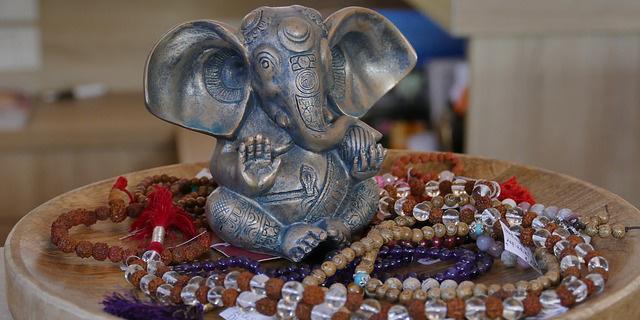Popularity of mala bead bracelets and necklaces has drastically increased over the past ten years and you can see people wearing them all around the world! The practices of using Buddhist Mala Prayer Beads to clear and focus the mind by counting the repetitions of mantra chants has been used for centuries. Anyone can use these beads, they are not limited to one religion or tradition.
Prayer beads are believed to have originated around the 8th century in India. A large number of modern religious practices include mala beads to help recite prayers and to meditate (Mala,Rosary, Subha, etc.). The word ‘bead’ originates from the Anglo-Saxon words ‘bidden’ and ‘bede’, which mean ‘to pray’ and ‘prayer’.

The usage of Mala Beads
There’s more than one way to use mala beads, so experiment a bit and find what works best for you. One great way is to feel the energy and power of the mala beads as you wear it throughout each day.
Traditionally, the beads are used during meditation. The practice of chanting a mantra is used as a form of meditation.The main purpose of the beads is to help recite mantras as you meditate, hence its name. They are used so the user of the mantra can focus on the vibration, meaning and sound of what is being said, while counting the beads. The beads help the user keep their focus on their mantra and meditative state, and help prevent the mind from wandering.In the process of quieting your mind, complete concentration may not come easily at first. Mala prayer beads are excellent tools to help you keep your focus while chanting mantras. Hold the beads in your hand and feel their energy as you meditate
Beads can also be made from different materials – crystals, seeds, wood or gemstones. Each material has different beneficial features that enhance the purpose of the mala. For example, Natural Amethyst and Chrysocolla Lotus Mala combines the effects of two beneficial stones in one mala.
Amethyst is known for balancing energies, healing impatience, bringing clarity, eliminating mental agitation and helping grounding. It naturally guides the mind toward deeper understanding and is possibly one of the best crystals that can be used for meditation.
Chrysocolla has soothing and peaceful vibes of the ocean, which help cool off hotheaded, fiery emotions as soon as it touches the skin. It discharges negative energies and is often used to ease work-related stress. It calms the mind and allows inner wisdom and truth and to surface.
What is the meaning behind the number 108?
But why are there 108 beads and why are there 108 repetitions? Different disciplines and cultures give different meaning and significance to the number 108, across a wide range of scientific, religious and philosophical beliefs. Here are some of the most interesting ones:
- According to some Vedic teaching institutions like Arsha Vidya Gurukul, Sanskrit alphabet has 54 letters, each letter having the feminine and masculine aspect – Shakti and Shiva. The total number is 108.
- Chakras are the focal points in our subtle bodies, where energy lines intersect. The Heart Chakra is formed out of 108 energy lines that are converging at its spot.
- The number 108 is also known as a ‘Harshad’ number, which means that it can be divided by the sum of its digits. In Sanskrit language, harshad means ‘great joy’.
- As separate numbers, it is believed that 1 stands for higher Truth, 0 for spiritual completeness and 8 for eternity.
There are countless of other examples of the significance of the number 108. Some malas have the 109th bead, hanging at the bottom, which is called the Guru Bead. It is not to be counted in repetitions, its purpose is to indicate the end and start point of a cycle.
Mala beads are so much more than a trendy fashion-statement. Depending on the material they are made of, they can give their wearer a wide range of benefits. Check out our great collection of malas, which can be worn as a necklace or bracelet, where you will certainly be able to find the one that speaks to you.
































thanks for this as I have two Sandel wood malas.love them